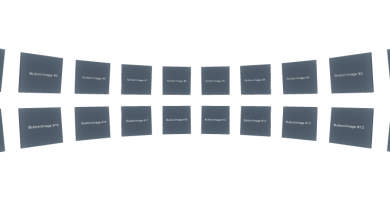Part 2 – Getting Started – Creating a Blog
Getting Started
So how do you get started? In general, you can create a blog in the following ways:
- hire consultants;
- purchase a (WordPress) theme along with customization services;
- acquire a theme (many are free, many are low cost) and use it “as is”; or
- obtain a theme and modify it yourself.
Consultants Work Quickly
Provided you can afford their fees, consultants, if carefully selected, can get your site up and running the fastest. If you choose one that has experience in your specific market, you can also gain value from their knowledge of how to sell in your market. Having used and managed multiple consulting teams, you may want to use the following advice.
Engagement Letters Define the Outcome
Always work from a written letter that defines the work to be performed. This document is usually called an “engagement” letter. The letter should define both technical and financial milestones. Objective tests should determine whether the milestone has been reached. For example, can you successfully follow links from the blog to the webstore without problem. Can you complete a “add me to your newsletter” form submission. Can a customer securely upload a photo with their completed form. The tests should include all of the major functions of the blog site.
The letter should also set the terms for partial work completion. What happens if you are not happy with the work? Are you liable for all of the billed hours? Who owns the work product (code)? Setting milestone payments for completed tasks helps define your expected costs. Pay after the product is delivered and tested. Agree that incomplete work is not compensated.
Budget for Changes
The engagement letter does not need to be static. It should include clauses that allow you to update the agreement. For example, your initial design did not have a submission form for a catalog or a quote form for bulk purchases. You would want to be able to update the engagement letter to incorporate these changes. Also, not all of the required tests may be defined up front as the site design has not been finalized. The engagement letter should be updated to include these additional tests. However, each change also creates the room for additional fee negotiation, so the fewer changes made, the tighter control over the total costs you will retain.
Don’t Know What you Want?
You may be tempted to start the project without any type of written agreement. Based on our experience, this is a mistake. The engagement letter forces you to think through what you want the site to accomplish. The exercise of defining your requirements will help you communicate your needs to the consultants. What if you have no idea what you want? The start with a small engagement where the outcome is the definition of your needs. Good consultants can walk you through the process. Write the engagement letter so that the finished work product (the functional and technical requirements document(s)) are yours. This way, you can then shop the work if you feel the need to bring some competition to the table.
Defining Your Needs
The process of defining the project requirements begin with a series of structured meetings. The consultant will normally act as the meeting moderator. The objective of each meeting is to gather input from the different parts of your organization. What do each of the key people in your business feel the blog site should accomplish? After each meeting, the consultant will organized the information then present it back for confirmation by the participants. This process can flush out hidden assumptions and help align the organization. If done properly, the benefits of this process extend beyond just the blog.
Locate an Example
A lower cost alternative is to find a site that you like or find an existing theme that covers about 75%~85% of what you want in your blog. This way, the consultants can customize existing templates rather than starting from scratch. You may have to compromise on some of the features to keep the costs reasonable, but you can still leverage the consultants’ technical knowledge with a design and style that you like. Be prepared for a few surprises on the way as all technical work contains at least a few land mines.
Too Many Choices
If you choose to work from an existing theme, there are literally thousands to choose from. While this sounds good, too many choices actually makes selecting one difficult. The easiest way to accomplish this is to find an existing WordPress site and simply email the webmaster or blogger. As long as they are not a direct competitor, they are likely to share basic site information with you. If they do not respond, you can always use your browser to examine the site. Simply go to the site and choose “view source” from your browser menu. The actual code running the site will open up. Normally, the theme name can be found in the header (first part) section of the code listing. Keep in mind, this code may be heavily modified so you won’t be able to simply open up the same WordPress theme and achieve the same results. But, it provides a starting point for finding the same theme or one that is similar.

